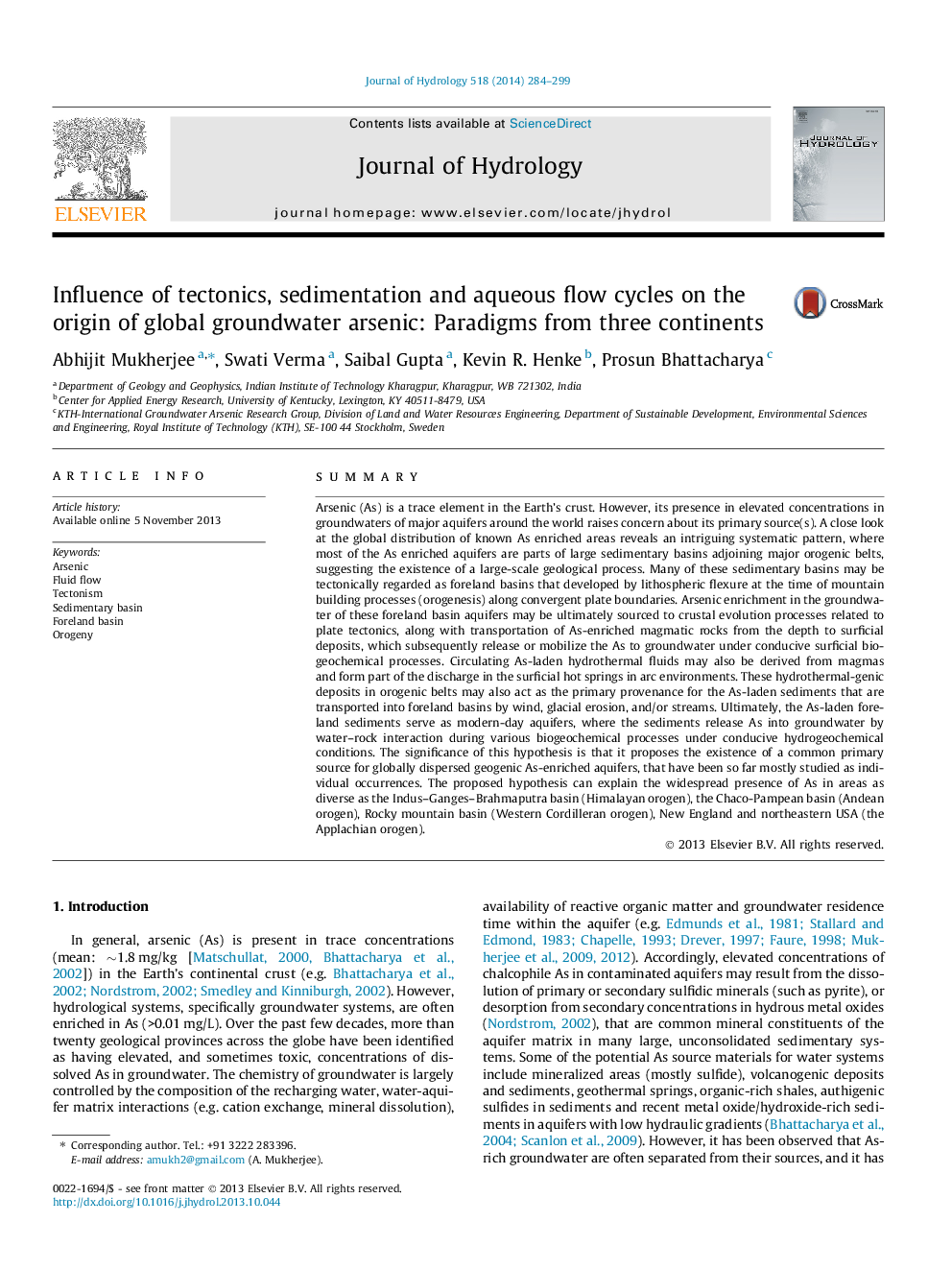| کد مقاله | کد نشریه | سال انتشار | مقاله انگلیسی | نسخه تمام متن |
|---|---|---|---|---|
| 4575960 | 1332900 | 2014 | 16 صفحه PDF | دانلود رایگان |
• Globally, groundwater arsenic (As) occurrence seems to be very systematic.
• We propose that the As occurrence is a manifestation of basin tectonics/evolution.
• Global distribution of As in relation to geodynamic forces and aqueous flow is demonstrated.
• Hypotheses of how tectonic-input As transfers to groundwater systems have been provided.
• Case studies are provided from As-enriched areas of Asia, North and South America.
SummaryArsenic (As) is a trace element in the Earth’s crust. However, its presence in elevated concentrations in groundwaters of major aquifers around the world raises concern about its primary source(s). A close look at the global distribution of known As enriched areas reveals an intriguing systematic pattern, where most of the As enriched aquifers are parts of large sedimentary basins adjoining major orogenic belts, suggesting the existence of a large-scale geological process. Many of these sedimentary basins may be tectonically regarded as foreland basins that developed by lithospheric flexure at the time of mountain building processes (orogenesis) along convergent plate boundaries. Arsenic enrichment in the groundwater of these foreland basin aquifers may be ultimately sourced to crustal evolution processes related to plate tectonics, along with transportation of As-enriched magmatic rocks from the depth to surficial deposits, which subsequently release or mobilize the As to groundwater under conducive surficial biogeochemical processes. Circulating As-laden hydrothermal fluids may also be derived from magmas and form part of the discharge in the surficial hot springs in arc environments. These hydrothermal-genic deposits in orogenic belts may also act as the primary provenance for the As-laden sediments that are transported into foreland basins by wind, glacial erosion, and/or streams. Ultimately, the As-laden foreland sediments serve as modern-day aquifers, where the sediments release As into groundwater by water–rock interaction during various biogeochemical processes under conducive hydrogeochemical conditions. The significance of this hypothesis is that it proposes the existence of a common primary source for globally dispersed geogenic As-enriched aquifers, that have been so far mostly studied as individual occurrences. The proposed hypothesis can explain the widespread presence of As in areas as diverse as the Indus–Ganges–Brahmaputra basin (Himalayan orogen), the Chaco-Pampean basin (Andean orogen), Rocky mountain basin (Western Cordilleran orogen), New England and northeastern USA (the Applachian orogen).
Journal: Journal of Hydrology - Volume 518, Part C, 10 October 2014, Pages 284–299
